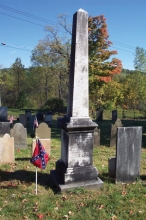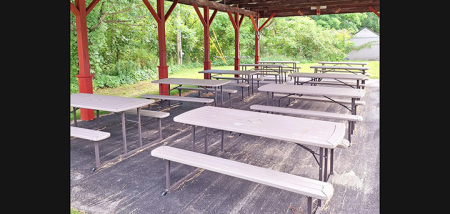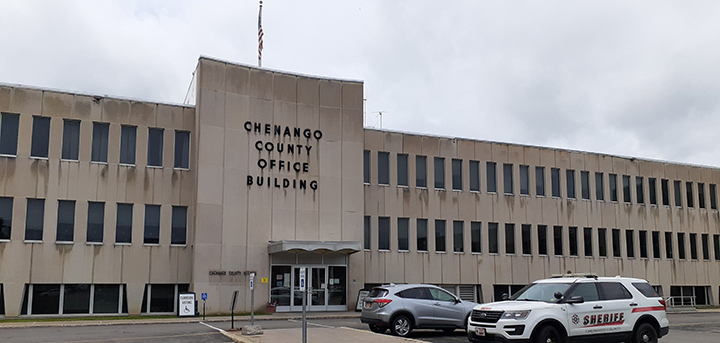Walter A. Baldwin: Guilford Native, Confederate Soldier
Published:
December 30th, 2011

Editor’s Note: In conjunction with the Chenango County Civil War Commemoration Project Team, The Evening Sun will present a monthly series chronicling items of local interest during the war between the states, compiled and written by a number of local history enthusiasts.
By Sharon Donahe
Correspondent
At the time of the Civil War there were men native to Chenango County who, for various reasons, ended up in the service of the Confederacy. Given the conflict of loyalties represented by fighting for the South with family ties in the North, their stories present a perspective on the war not always available when observed from only a Northern viewpoint. Such is the story of Walter A. Baldwin of Guilford.
Among the Civil War soldiers buried in the Town of Guilford is Walter Abram Baldwin who served with the Confederacy. Walter was born 4 August 1831 in Guilford the son of William and Louisa (Booth) Baldwin. The Baldwins were early merchants in Guilford Center where Walter grew up and learned the family business. In 1852 when he was 21 years of age he struck out on his own, moving to Atlanta, Georgia where he established a successful mercantile business. At the outbreak of the Civil War in 1861 he was 30 years old and had been a resident of the South for nine years. He was reportedly of Union sentiment, but forced to give his unwilling aid to the defense of the South. In the early years of the war he avoided service by first paying for a substitute and then by purchasing an exemption with a large sum of money. Then in the last year of the war, with the threatening advance of Northern troops and the South desperate for able-bodied men to fill their military rosters, many men who had been exempted to that point found themselves drafted into the Confederate Army – including Walter A. Baldwin. He enlisted on 14 May 1864 as a private in Company F, 22nd Battalion Georgia Heavy Artillery.
The Union assault on Georgia began in earnest in May 1864 when the Federal troops of General William Tecumseh Sherman crossed into Georgia. The city of Atlanta fell on 2 September 1864 after a long siege, and on 15 November 1864 Sherman initiated his March to the Sea, during which a wide swath of destruction was cut through Georgia’s heartland, the goal being the elimination of both the South’s capability and desire to continue the fight.
Approximately a month later, near the march’s end, the only thing standing between Sherman’s troops and the goal of Savannah, Georgia was Fort McAllister, a Confederate earthwork fortification located near Savannah on the Ogeechee River. Fort McAllister had stood firm since it was built in 1861, surviving seven major Federal Naval attacks as well as other attempts to dislodge it.
In December of 1864, Fort McAllister was defended by 230 Confederates. This included men from Walter A. Baldwin’s military company, thus placing him at Fort McAllister at this critical time. On 13 December 1864 Sherman ordered an all-out assault on the fort by 4000 of his troops, outnumbering the Confederate defenders 17 to 1. Although overwhelmed, the defenders resisted bravely, requiring individual hand-to-hand combat before being subdued.
In his report about the battle Fort McAllister’s Confederate commander said the following: “ ... Utterly isolated, cut off from all possible relief – capture or death the only alternative – the conduct of this little garrison, in the face of such tremendous odds, was gallant in the extreme.”
Walter Baldwin survived the battle, was taken prisoner and transported first to Hilton Head and then to the Federal prison at Point Lookout, Maryland, arriving there on 1 February 1865. Prison conditions were horrific, especially during the final months of the war. Overcrowding, limited shelter, poor food quality and quantity, lack of medical attention and other critical issues resulted in rampant disease and starvation.
Many who survived the prisons had their health permanently compromised and a significant number did not long survive post release. Such was the fate of Walter A. Baldwin whose health was decimated by his prison confinement. Somehow word found its way to Walter’s family in Guilford of his incarceration at Point Lookout, upon which his father immediately traveled to Point Lookout to secure his release. Walter was released from Point Lookout 19 June 1865 after making his Oath of Allegiance to the United States. He had been imprisoned for four months and 18 days. His father then brought him home to Guilford where he would die 22 July 1865, one month and 12 days after arriving home. He was 34 years of age at the time of his death.
Walter A. Baldwin was buried in Guilford Center Cemetery where his name is inscribed on the family monument. His death was greatly lamented as reflected in the following words written of him at the time of his death: “Genial and bland in his deportment, honest and fair in his dealings and dutiful and affectionate as a son and brother, he has left many weeping hearts to mourn his premature departure and that he should die there a victim of the rapacity and despotism of an accursed rebellion.”
Comments










